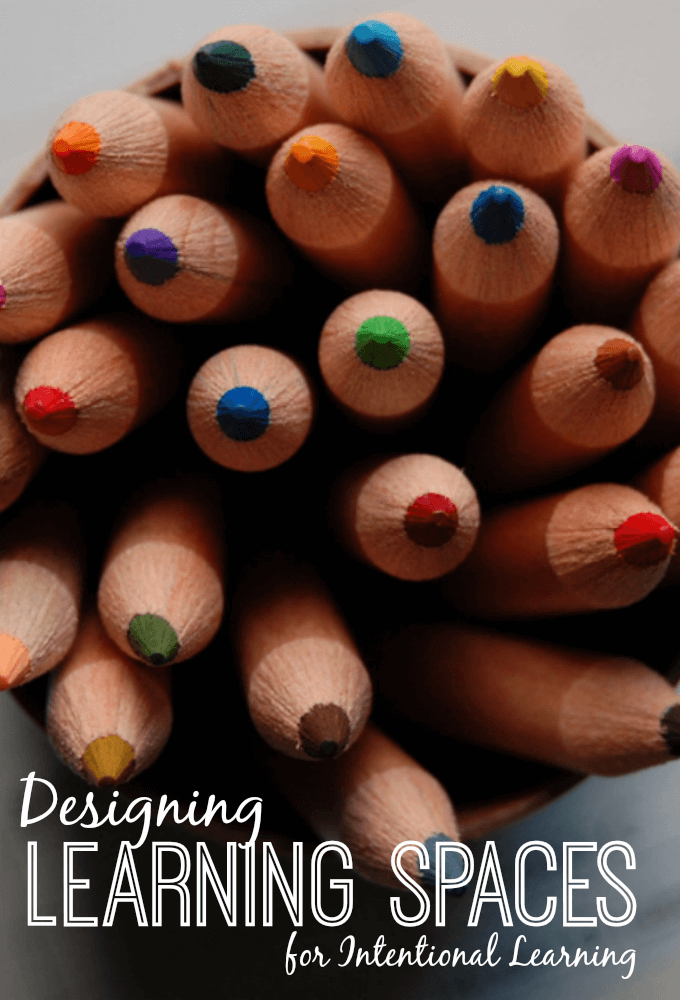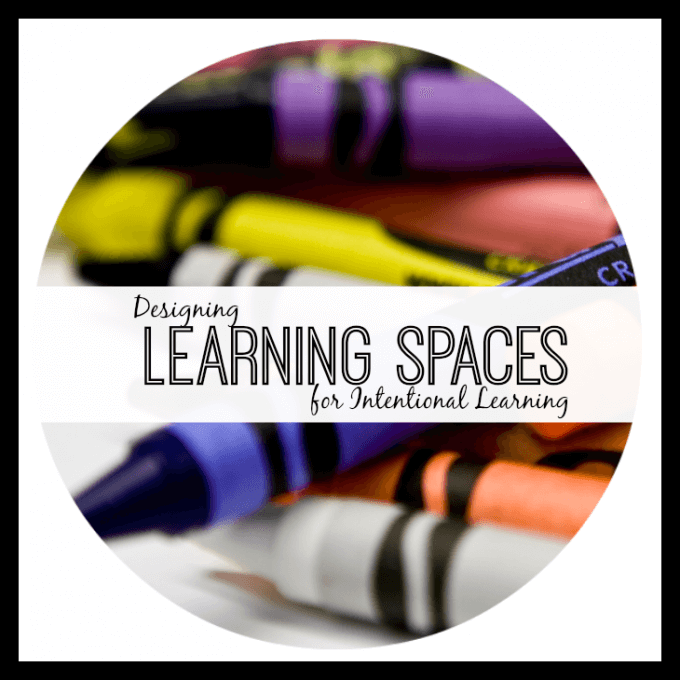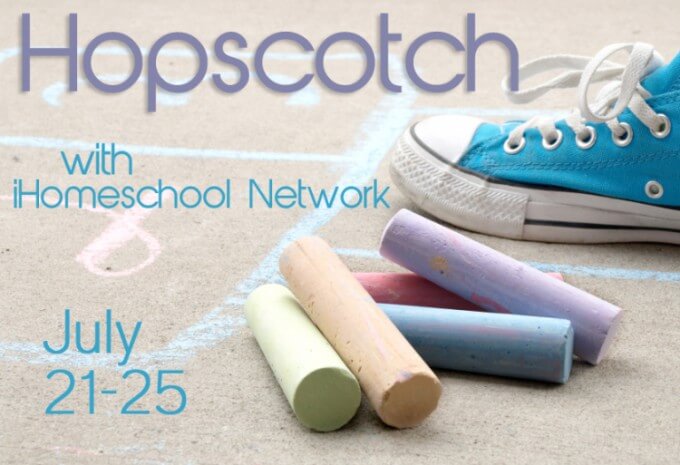When you think of the words “Learning Spaces” what comes to mind? Is it a classroom with desks, a library full of books, or a science lab ready to be explored? For me, “learning spaces” can be found anywhere you are intentional and strategic. By planning out your child’s environment and how they will interact with it, you have the ability to ignite creativity, critical thinking and discovery. A well designed space can encourage children to ask questions, explore the impossible and practice skills needed for everyday life. This can be in a traditional classroom, a “school room” at home, their bedroom, and even the kitchen of your home.
As part of IHomeschool Network’s Hopscotch Series, this 5 day series with showcase how I have designed our space for learning in our home without a schoolroom. I will highlight ways to encourage intentional learning, creativity and independence. Each day, I will share a different area of focus from reading to sensory.

{THIS POST MAY CONTAIN AFFILIATE LINKS TO MATERIALS I RECOMMEND. ANYTHING YOU PURCHASE THROUGH THESE LINKS HELPS SUPPORT LEMON LIME ADVENTURES. THANK YOU IN ADVANCE FOR CHOOSING TO SUPPORT US.}
What are Intentional Learning Spaces?
According to the Reggio Emilia philosophy, the environment is seen as the third teacher. It is believed that the environment is a communicator and is capable of shaping values. How we place materials, what the children see and experience, and the choice of materials all play a significant role in how the children “see” the purpose of their learning space.
Simple Steps to Designing Intentional Learning Spaces
1. Simplify
Start by de-cluttering your space. All of the materials you own do not need to be presented at one time. I know it seems scary, but do away with toy boxes, huge bins, and drawers full to the brim.
Try starting with a blank slate. Empty the space and start from nothing. Slowly build your space up to include the materials you want your children to notice and explore.
Try arranging materials so they are accessible to your children. You will be surprised the difference you see in their play and learning when their space is clean, organized and clutter free.
2. Curate
Materials are in integral part of how a space is used. Think about what your purpose is for the space and how you envision your children using it. The materials should foster creativity and spark questioning.
Some of the best materials are free or found in nature. You don’t need expensive toys and gadgets that make noise. More often than not simple is better.
Keeping materials fresh and new will also encourage children to explore them freely and keep their interest high. As you notice the interest starting to wane, it is a good idea to rotate the materials and present something new.
3. Invite
Inviting children to manipulate their environment is key to intentional learning spaces. Think about what the presentation of your materials says to the learner. Are all the materials put away in boxes? Do they need to ask you for help to manipulate them? Do the materials seem out of reach or on the child’s level?
Often times, a simple basket, a tray or even a shelf with only a few items can be so inviting for children. They are able to see the materials that are there for them, understand their purpose and be intentional with them.
4. Facilitate
One key that is often overlooked in designing a space for learning is the adults role in the space. Yes, you want the children to be independent and you want them to use the space without much assistance, however, we can not assume they know how to use the materials you have given them.
Sometimes this means modeling a few ideas, asking questions while they investigate or making kid-friendly instructions to go along with them. It is my belief that is the role of the adult to facilitate, guide and support the children in their investigations.
Resources for Intentional Learning Spaces
How the Environment Inspires Curriculum | Community Playthings
Making the Environment the Third Teacher | Exchange, The Early Leaders’ Magazine
30 Days to Transform Your Play | An Everyday Story and Racheous Lovable Learning
5 Days of Intentional Learning Spaces
Are you wondering what I have in store for you this week? Great! I am so excited to share some of the various learning spaces we have in our home. While planning this series, I made a list of learning spaces and I was overwhelmed with the possible spaces. There were so many possibilities that this series could last much longer than 5 days. I decided to focus on the intent in my home. What are the 5 most important things I want my children to get from their environment?
It is my goal to share what I have learned in my years as an educator both in the classroom and at home. I want to be transparent. I am not a designer. I have not had any formal training is design. While my philosophy matches that of Reggio Emilia and Montessori, I have not been trained in either teaching method. I believe in the environment as a third teacher and that children are encouraged to spark their curiosity and intellect when they are presented with well designed spaces.
With this series, I plan to share our space, simple organization, intentional materials, creative invitations, and tips for facilitating learning. I hope to also share inspirational posts from others that continue to inspire me to transform our learning spaces.

Day One: Intentional Reading Spaces
Day Two: Intentional Writing Spaces
Day Three: Intentional Spaces for Creating
Day Four: Intentional Spaces for Discovery
Day Five: Intentional Spaces for Igniting the Senses
Don’t forget this is part of a HUGE series with IHomeschool Network, where over 30 blogs are sharing their 5 Day Series on a myriad of subjects! You won’t want to miss some of the great things being shared!
How are you planning to be intentional this school year? I would love to hear! Please come connect with me on Facebook, Twitter, Google+, Pinterest, Instagram or subscribe by email so you don’t miss what comes next in the Intentional Design Series!
photo credit: jonathangarcia via photopin cc







Pingback: Intentional Learning Spaces | Writing - Lemon Lime Adventures
Pingback: Intentional Learning Spaces | Reading - Lemon Lime Adventures
Pingback: Learning Spaces | Discovery - Lemon Lime Adventures
Pingback: 35 Homeschool Planning And Organizing Ideas - Golden Reflections Blog
Pingback: 50 Ideas for an Organized Homeschool | Creekside Learning
Pingback: 8 Areas to Include in your Playroom - Learning by Design